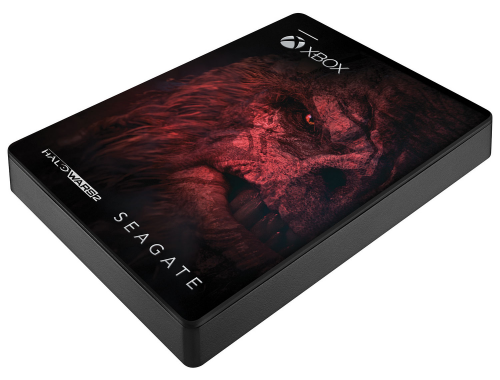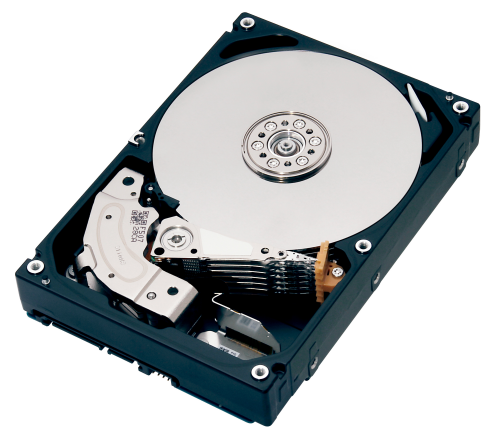- Details
- Flash Memory
NGD Systems, a pioneer creating intelligent solid state drives (SSD) for public and private cloud data centers, today announced the availability of the industry’s highest density storage solution. Shipping immediately and currently being qualified at leading OEMs, the Catalina SSD is available in capacities up to 24TB with 3D TLC flash in a PCIe edge card form factor.
“The Catalina is the industry’s highest capacity PCIe NVMe SSD, designed and optimized for applications requiring consistent and low latency mass storage,” said Nader Salessi, founder and chief executive officer of NGD Systems. “We are setting a new metric for energy and storage density to meet a key concern within data center and cold storage applications alike.”
At less than 0.65 watts per terabyte, the new benchmark of the Catalina SSD achieved by using NGD System’s patented Elastic FTL (Flash Translation Layer) algorithm, and the incorporation of its advanced error correction capabilities, which enables 3D TLC NAND flash in enterprise applications. Not only is this watt per terabyte ratio more efficient than that of any other SSD currently shipping, it is also better than the highest capacity Enterprise HDD currently shipping. Optimized for read intensive applications, the Catalina SSD is ideal for use in Content Delivery Networks (CDN), Just a Bunch of Flash drives (JBOFs), and media severs.
Add a comment- Details
- Flash Memory
 Toshiba Corporation has today unveiled the latest addition in its industry-leading line-up of BiCS FLASH three-dimensional flash memory with a stacked cell structure, a 64-layer device that achieves a 512-gigabit (64-gigabytes) capacity with 3-bit-per-cell (triple-level cell, TLC) technology. The new device will be used in applications that include enterprise and consumer SSD. Sample shipments of the chip started this month, and mass production is scheduled for the second half of this calendar year.
Toshiba Corporation has today unveiled the latest addition in its industry-leading line-up of BiCS FLASH three-dimensional flash memory with a stacked cell structure, a 64-layer device that achieves a 512-gigabit (64-gigabytes) capacity with 3-bit-per-cell (triple-level cell, TLC) technology. The new device will be used in applications that include enterprise and consumer SSD. Sample shipments of the chip started this month, and mass production is scheduled for the second half of this calendar year.
Toshiba continues to refine BiCS FLASH, and the next milestone on its development roadmap is the industry’s largest capacity, a 1-terabyte product with a 16-die stacked architecture in a single package. Plans call for the start of sample shipments in April 2017.
For the new 512-gigabit device, Toshiba deployed leading-edge 64-layer stacking process to realize a 65% larger capacity per unit chip size than the 48-layer 256-gigabit (32-gigabytes) device, and has increased memory capacity per silicon wafer, reducing the cost per bit.
Add a comment- Details
- Flash Memory
Transcend Information, Inc. (Transcend), a leading manufacturer of storage and multimedia products, is proud to release the Ultimate UHS-I U3M Video Speed Class 30 (V30) microSD memory cards. These MLC-based microSD cards reach blazing-fast transfer speeds of up to 95MB per second and offer optimum protection with capacities up to 128GB, ideal for 4K Ultra HD recording.

Transcend Ultimate microSD cards are manufactured with top-tier MLC NAND flash chips, providing consistent long-life durability and endurance. The newly-released Ultimate UHS-I U3M microSD cards meet the new UHS Video Speed Class 30 (V30) standards of the SD Association, offering minimum sequential write speed of 30MB/s, ideal for 4K video recording. With capacities of up to 128GB and read and write speeds of up to 95MB and 60MB per second, Transcend Ultimate UHS-I U3M microSD cards are perfect for recording fast-paced action and capturing smooth 4K Ultra HD and Full HD videos. Transcend Ultimate microSD cards are designed for use in action cameras, dashcams, smartphones, tablets, digital cameras, and drone cameras.
Add a comment- Details
- Network Storage
QNAP Systems, Inc. today announced the new TS-431X NAS - a cost-effective dual-core business NAS supporting 4 drives, one built-in 10GbE SFP+ port, and hardware-accelerated encryption. Along with its application-aware design and abundant productive features including containerized virtualization, centralized email management, a private-cloud-based note-taking tool, and Virtual JBOD, the 10GbE-ready TS-431X is a perfect NAS for small and midsize businesses looking for backup, restoration, private cloud, and higher bandwidth for rigorous data processing.

Powered by a dual-core AnnapurnaLabs, an Amazon company Alpine AL-212 1.7 GHz processor and 2GB/8GB DDR3 RAM (upgradable to 8GB), the TS-431X delivers up to 956 MB/s read speed with 10GbE, and up to 312 MB/s read speed with AES 256-bit volume-based data encryption. The integrated 10GbE SFP+ port enables exceptional throughput for intensive data transfer, and fast backup and restoration for an ever-growing amount of data.
Add a comment- Details
- Hard Disks
The latest special edition Game Drive for Xbox from Seagate is here! In collaboration with Microsoft and 343 Industries, Seagate introduces the Game Drive for Xbox Halo Wars 2 Special Edition Portable Drive. Emblazoned on the drive’s enclosure with an image of Atriox, warlord of the banished and fearsome villain, this product is the perfect complement to the long-awaited Halo Wars 2 set to release next week.

The newest addition to Seagate’s popular line of storage for gamers, the Seagate Game Drive offers 2TB of capacity to store 50+ Xbox games, plug-and-play functionality and compact size. Now, players can free up space on their console’s internal drive while consolidating all their favorite Xbox games into a single location, boosting storage for Xbox One S and Xbox One.
Add a comment- Details
- Flash Memory
ADATA Technology, a leading manufacturer of high performance DRAM modules, NAND Flash products, and mobile accessories today launched the XPG SX950 SSD and its accompanying gaming-styled EX500 drive enclosure. Loaded with up to 960GB of 3D MLC NAND and driven by a SMI controller, the SX950 utilizes a custom ADATA PCB and is backed by an extra-strict chip sorting process to ensure an SSD that can handle prolonged high demand. Performance reaches 560MB/s read and 530MB/s write. Bearing the signature XPG look, the EX500 is aimed at gamers and case modders, boasting a textured enclosure and a vibrant yet aggressive feel. It arrives with a spacer and bracket for easy install on desktops and notebooks. For users that would like to use the SX950 as external storage, the EX500 offers a stylish, durable, and easy-install enclosure that pairs instantly with desktops, notebook! s, and game consoles via high speed USB 3.1.

ADATA is completing its transition to stacked memory, or 3D NAND. This allows for SSDs with bigger capacities without a correlating increase in prices paid by end users. The SX950 uses durable 3D MLC (multi-level cell) NAND Flash and SMI controller. Consumers can choose from 240GB, 480B, and 960GB versions of the SX950. Not only denser (higher capacity), 3D NAND is also roughly 10% faster than 2D NAND and so the SX950 outpaces its predecessor, the SX930 – reaching 560MB/s read and 530MB/s write.
Add a comment- Details
- Network Storage
QNAP Systems, Inc. today released the TVS-882ST2 Thunderbolt 2 NAS. Powered by an energy-efficient Intel 6th Generation 14nm Core i5 Quad-core processor with AES-NI hardware encryption and supporting eight 2.5" SATA 6Gb/s SSD/HDD, it also includes high-speed Thunderbolt 2 connectivity, 10GbE 10GBASE-T dual networking ports, USB 3.1 Type-C/Type-A 10Gbps ports, 4K HDMI output and provides a Thunderbolt/NAS/iSCSI SAN triple solution. The TVS-882ST2 empowers intensive applications such as 4K video editing, and provides high-speed data access, back up and sharing. The TVS-882ST2 is also suitable for an all-SSD configuration to provide the utmost performance.

Running the new 64-bit QTS 4.3 operating system, the TVS-882ST2 supports the Thunderbolt to Ethernet (T2E) Converter that allows the Thunderbolt port to act as an Ethernet connection. This allows users of devices without Ethernet ports to connect to networks without requiring an extra adapter. Thunderbolt 3 (USB-C) to Thunderbolt 2 adapters (sold separately) can also be used with the TVS-882ST2 to provide additional connectivity options.
Add a comment- Details
- Flash Memory
Toshiba Corporation today announced that it has started construction of a new state-of-the-art semiconductor fabrication facility, Fab 6, and a new R&D center, the Memory R&D Center, at Yokkaichi Operations in Mie prefecture, Japan, the company’s main memory production base.

Fab 6 will be dedicated to production of BiCS FLASH™, Toshiba’s innovative 3D Flash memory. Like Fab 5, construction will take place in two phases, allowing the pace of investment to be optimized against market trends, with completion of Phase 1 scheduled for summer 2018. Toshiba will determine installed capacity and output targets and schedules by closely monitoring the market.
Toshiba will also construct a Memory R&D Center adjacent to the new fab, with completion targeting December 2017. The facility will advance development of BiCS FLASH™ and new memories.
Add a comment- Details
- Hard Disks
Toshiba America Electronic Components, Inc. (TAEC), a committed technology leader, today announces its first MN Series HDDs, bridging the value gap between top-end enterprise capacity HDDs and entry-level desktop HDDs, while still delivering 7,200RPM rotational latency performance.

The MN series delivers up to 8TB capacity in a 3.5-inch form factor for a broad range of file and object storage applications. With a 6 Gbit/s SATA interface, 7,200 rotational speed, 1,000,000 hour MTTF rating, and a rated annual workload of 180TB transferred, the new HDD series delivers the performance and reliability needed for file and object storage workloads that typically utilize sequential data transfer operations. The drives are designed for 24/7 power-on operation and feature rotational vibration compensation technology to help provide consistent performance in tower and low-density style multi-drive enclosures, such as small NAS platforms.
Add a comment- Details
- Flash Memory
 Western Digital Corp. today announced that it has commenced pilot production of the company's 512 Gigabit (Gb) three-bits-per-cell (X3) 64-layer 3D NAND (BICS3) chip in Yokkaichi, Japan, with mass production expected in the second half of 2017. The first of its kind, the chip is the latest achievement in a nearly three-decades-long legacy of flash memory industry firsts from the storage leader.
Western Digital Corp. today announced that it has commenced pilot production of the company's 512 Gigabit (Gb) three-bits-per-cell (X3) 64-layer 3D NAND (BICS3) chip in Yokkaichi, Japan, with mass production expected in the second half of 2017. The first of its kind, the chip is the latest achievement in a nearly three-decades-long legacy of flash memory industry firsts from the storage leader.
"The launch of the industry's first 512Gb 64-layer 3D NAND chip is another important stride forward in the advancement of our 3D NAND technology, doubling the density from when we introduced the world's first 64-layer architecture in July 2016," said Dr. Siva Sivaram, executive vice president, memory technology, Western Digital. "This is a great addition to our rapidly broadening 3D NAND technology portfolio. It positions us well to continue addressing the increasing demand for storage due to rapid data growth across a wide range of customer retail, mobile and data center applications."
The 512Gb 64-layer chip was developed jointly with the company's technology and manufacturing partner Toshiba. Western Digital first introduced initial capacities of the world's first 64-layer 3D NAND technology in July 2016 and the world's first 48-layer 3D NAND technology in 2015; product shipments with both technologies continue to retail and OEM customers.
Add a comment
